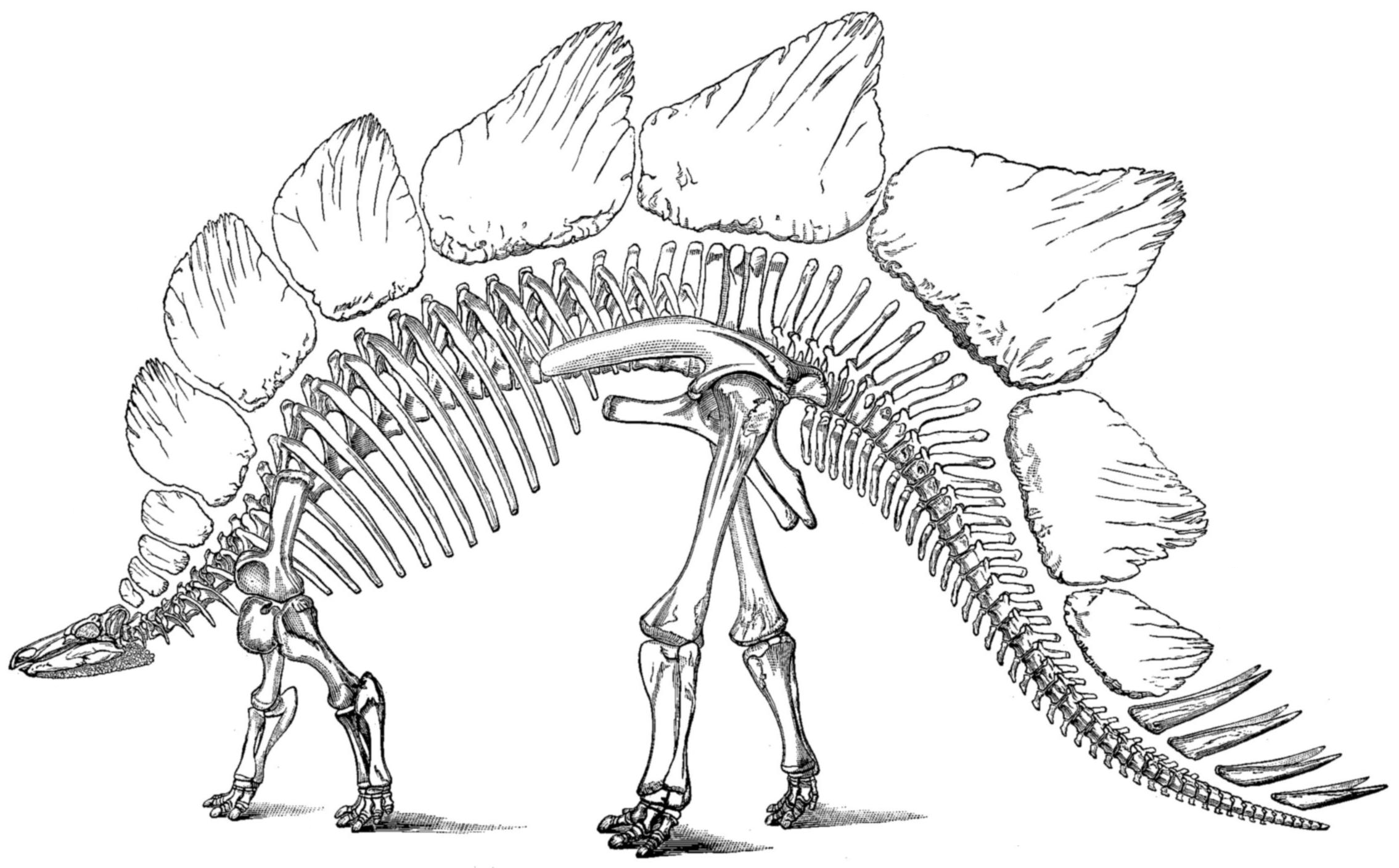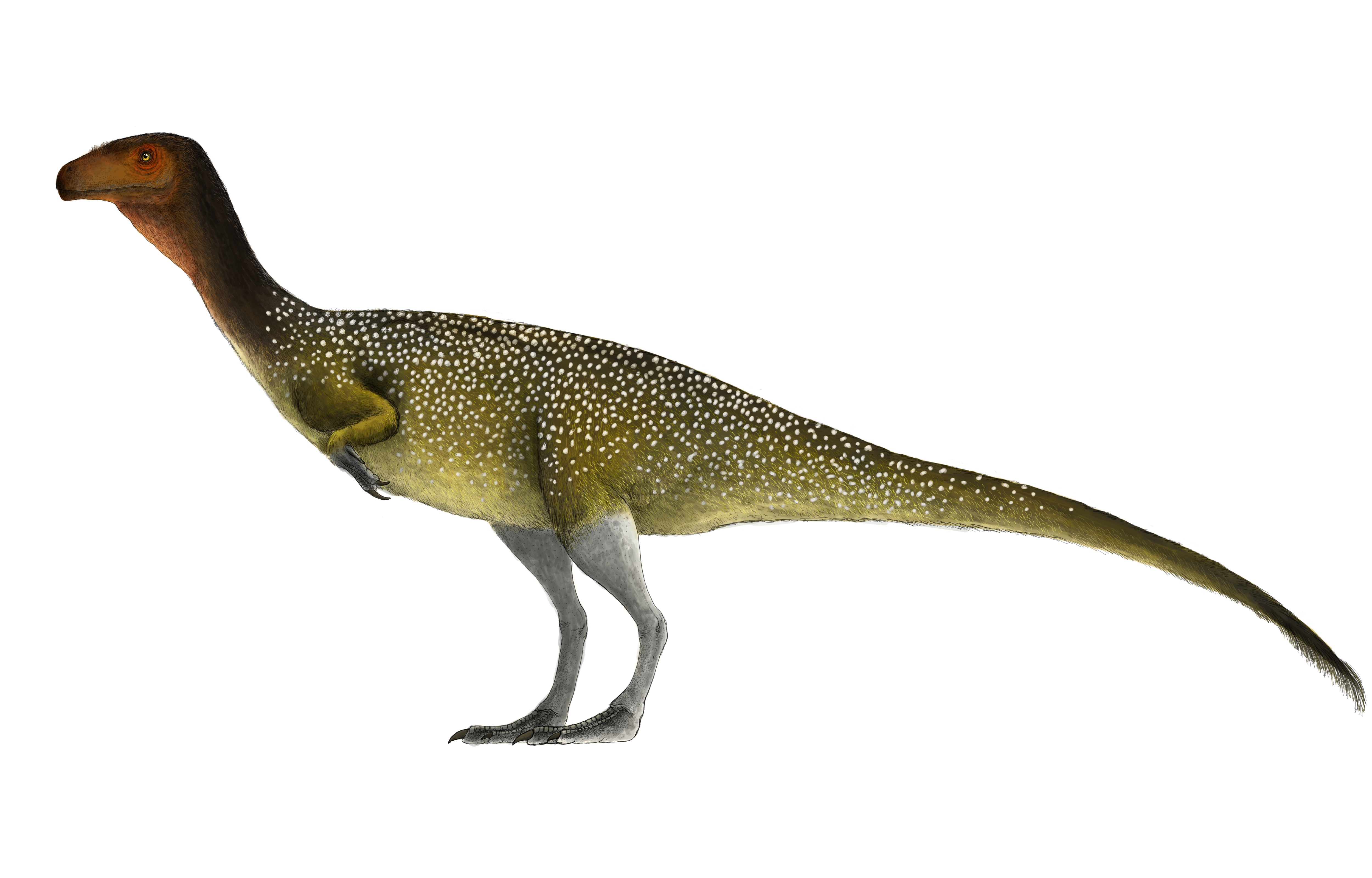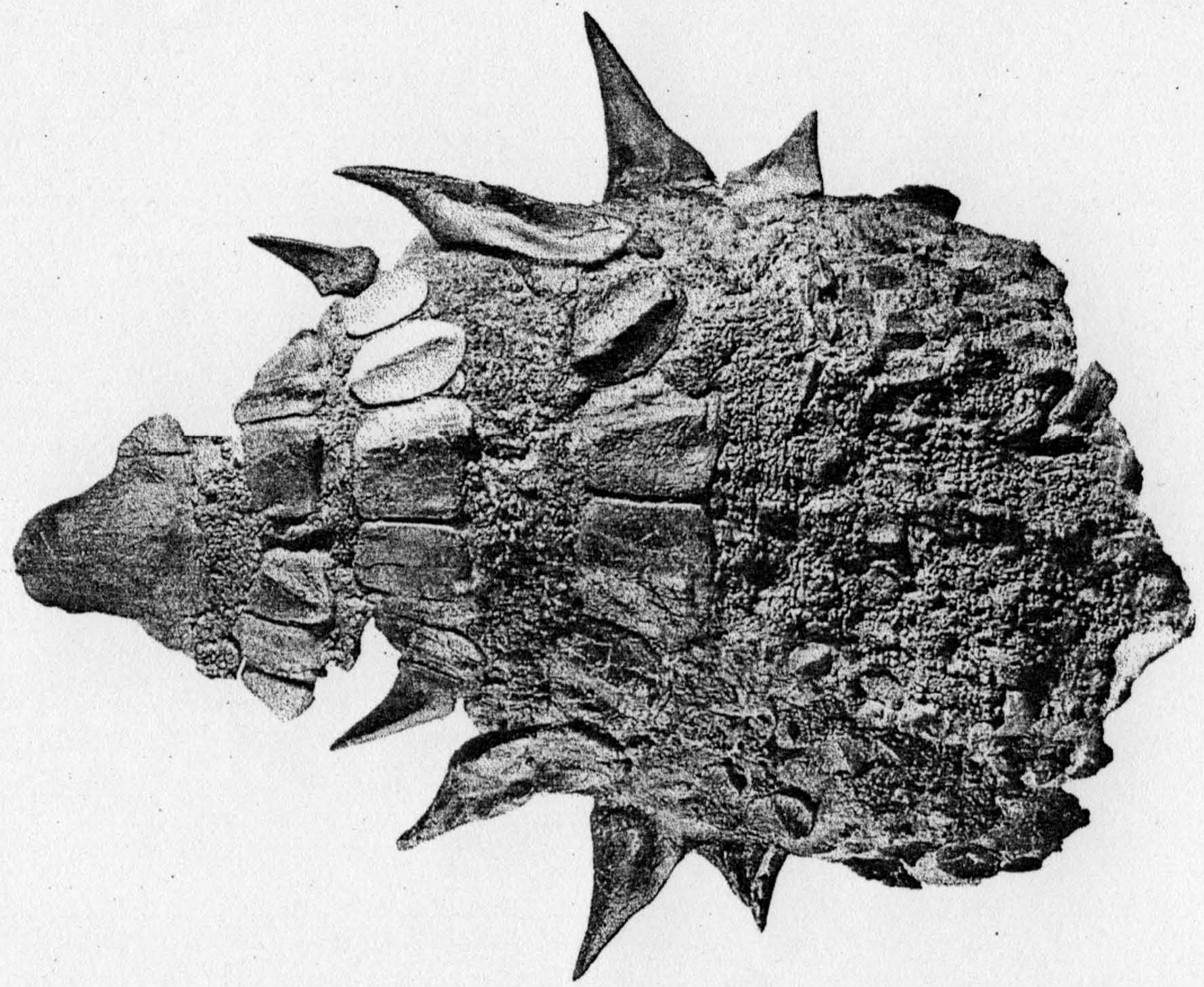|
Ornithischians
Ornithischia () is an extinct order of mainly herbivorous dinosaurs characterized by a pelvic structure superficially similar to that of birds. The name ''Ornithischia'', or "bird-hipped", reflects this similarity and is derived from the Greek stem ' (), meaning "of a bird", and ' (), plural ', meaning "hip joint". However, birds are only distantly related to this group as birds are theropod dinosaurs. Ornithischians with well known anatomical adaptations include the ceratopsians or "horn-faced" dinosaurs (e.g. ''Triceratops''), the pachycephalosaurs or "thick-headed" dinosaurs, the armored dinosaurs (Thyreophora) such as stegosaurs and ankylosaurs, and the ornithopods. There is strong evidence that certain groups of ornithischians lived in herds, often segregated by age group, with juveniles forming their own flocks separate from adults. Some were at least partially covered in filamentous (hair- or feather- like) pelts, and there is much debate over whether these filaments foun ... [...More Info...] [...Related Items...] OR: [Wikipedia] [Google] [Baidu] |
Heterodontosaurus
''Heterodontosaurus'' is a genus of heterodontosaurid dinosaur that lived during the Early Jurassic, 200–190 million years ago. Its only known member species, ''Heterodontosaurus tucki'', was named in 1962 based on a skull discovered in South Africa. The genus name means "different toothed lizard", in reference to its unusual, heterodont dentition; the specific name honours G. C. Tuck, who supported the discoverers. Further specimens have since been found, including an almost complete skeleton in 1966. Though it was a small dinosaur, ''Heterodontosaurus'' was one of the largest members of its family, reaching between and possibly in length, and weighing between . The skull was elongated, narrow, and triangular when viewed from the side. The front of the jaws were covered in a horny beak. It had three types of teeth; in the upper jaw, small, incisor-like teeth were followed by long, canine-like tusks. A gap divided the tusks from the chisel-like cheek-teeth. The body was sho ... [...More Info...] [...Related Items...] OR: [Wikipedia] [Google] [Baidu] |
Heterodontosauridae
Heterodontosauridae is a family (biology), family of ornithischian dinosaurs that were likely among the most Basal (phylogenetics), basal (primitive) members of the group. Their phylogenetic placement is uncertain but they are most commonly found to be primitive, outside of the group Genasauria. Although their fossils are relatively rare and their group small in numbers, they have been found on all continents except Australia (continent), Australia and Antarctica, with a range spanning the Early Jurassic to the Early Cretaceous. Heterodontosaurids were fox-sized dinosaurs less than in length, including a long tail. They are known mainly for their characteristic teeth, including enlarged canine (tooth), canine-like tusks and cheek teeth adapted for chewing, Analogy (biology), analogous to those of Cretaceous hadrosaurids. Their diet was herbivore, herbivorous or possibly omnivore, omnivorous. Description Among heterodontosaurids, only ''Heterodontosaurus'' itself is known fr ... [...More Info...] [...Related Items...] OR: [Wikipedia] [Google] [Baidu] |
Laquintasaura
''Laquintasaura'' is a genus of Venezuelan ornithischian dinosaur containing only the type species ''Laquintasaura venezuelae''. The species was the first dinosaur to have been identified from Venezuela. It is known from extensive remains, all from a singular bonebed locality which has been sampled for specimen blocks over the course of several expeditions, largely led by Marcelo R Sánchez-Villagra. A small, very primitive animal, it is known for its distinct dental anatomy and for being one of the earliest and most primitive ornithischians in the fossil record. Taxonomic uncertainty has led to conflicting theories that it is either as the base of Ornithischia or at the base of the subgroup Thyreophora. In either model, its dating to around 200 million years ago, at the start of the Jurassic, existence in equatorial latitudes, and primitive nature make it a key view into early ornithischian evolution. It's thought that ''Laquintasaura'' would've lived in groups and had a possible ... [...More Info...] [...Related Items...] OR: [Wikipedia] [Google] [Baidu] |
Dinosaur
Dinosaurs are a diverse group of reptiles of the clade Dinosauria. They first appeared during the Triassic period, between 243 and 233.23 million years ago (mya), although the exact origin and timing of the evolution of dinosaurs is the subject of active research. They became the dominant terrestrial vertebrates after the Triassic–Jurassic extinction event 201.3 mya; their dominance continued throughout the Jurassic and Cretaceous periods. The fossil record shows that birds are feathered dinosaurs, having evolved from earlier theropods during the Late Jurassic epoch, and are the only dinosaur lineage known to have survived the Cretaceous–Paleogene extinction event approximately 66 mya. Dinosaurs can therefore be divided into avian dinosaurs—birds—and the extinct non-avian dinosaurs, which are all dinosaurs other than birds. Dinosaurs are varied from taxonomic, morphological and ecological standpoints. Birds, at over 10,700 living species ... [...More Info...] [...Related Items...] OR: [Wikipedia] [Google] [Baidu] |
Stegosaurus
''Stegosaurus'' (; ) is a genus of herbivorous, four-legged, armored dinosaur from the Late Jurassic, characterized by the distinctive kite-shaped upright plates along their backs and spikes on their tails. Fossils of the genus have been found in the western United States and in Portugal, where they are found in Kimmeridgian- to early Tithonian-aged strata, dating to between 155 and 145 million years ago. Of the species that have been classified in the upper Morrison Formation of the western US, only three are universally recognized: ''S. stenops'', ''S. ungulatus'' and ''S. sulcatus''. The remains of over 80 individual animals of this genus have been found. ''Stegosaurus'' would have lived alongside dinosaurs such as ''Apatosaurus'', '' Diplodocus'', '' Brachiosaurus'', '' Ceratosaurus'', and ''Allosaurus''; the latter two may have preyed on it. They were large, heavily built, herbivorous quadrupeds with rounded backs, short fore limbs, long hind limbs, and tails held ... [...More Info...] [...Related Items...] OR: [Wikipedia] [Google] [Baidu] |
Eocursor
''Eocursor'' (meaning "dawn runner") is genus of basal ornithischian dinosaur that lived in what is now South Africa during the Early Jurassic. Remains of this animal have been found in the Upper Elliot Formation and it is among the most completely known early ornithischians, shedding new light on the origin of the group. The exact age of this taxon has been the subject of uncertainty. It was originally interprereted as living during the Late Triassic (Norian age), around 210 million years ago; however, Olsen, Kent & Whiteside (2010) stated that there is no independent geochronological support for its assumed age, and the available data makes it impossible to conclusively determine whether ''Eocursor'' is of Triassic or Early Jurassic (potentially as young as Sinemurian) age. ''Eocursor'' was subsequently interpreted as a taxon of Early Jurassic age by McPhee ''et al.'' (2017), who identified the specimen as having originated from the Upper (not Lower) Elliot Formation. Fossils ... [...More Info...] [...Related Items...] OR: [Wikipedia] [Google] [Baidu] |
Chilesaurus
''Chilesaurus'' is an extinct genus of herbivorous dinosaur. The type and only known species so far is ''Chilesaurus diegosuarezi''. ''Chilesaurus'' lived about 145 million years ago (Mya) in the Late Jurassic period of Chile. Showing a combination of traits from theropods, ornithischians, and sauropodomorphs, this genus has far-reaching implications for the evolution of dinosaurs, such as whether the traditional saurischian-ornithischian split is superior or inferior to the proposed group Ornithoscelida. Description ''Chilesaurus'' measured roughly from nose to tail. The holotype is a smaller individual of half that length. The most unusual feature of ''Chilesaurus'' is its spatula-shaped, elongated teeth, obliquely pointing forwards. Such dentition would be unique in the Theropoda, where it has sometimes been recovered, and is typical for a herbivore, indicating ''Chilesaurus'' was a plant-eater. Another adaptation for eating plants is the backward-pointing pubic bone in ... [...More Info...] [...Related Items...] OR: [Wikipedia] [Google] [Baidu] |
Pisanosaurus
''Pisanosaurus'' () is an extinct genus of early dinosauriform, likely an ornithischian or silesaurid, from the Late Triassic of Argentina. It was a small, lightly built, ground-dwelling herbivore, that could grow up to an estimated long. Only one species, the type, ''Pisanosaurus mertii'', is known, based on a single partial skeleton discovered in the Ischigualasto Formation of the Ischigualasto-Villa Unión Basin in northwestern Argentina. This part of the formation has been dated to the late Carnian, approximately 229 million years ago. Discovery and naming ''Pisanosaurus'' is known from a single fragmented skeleton discovered in 1962 by Galileo Juan Scaglia at the Hoyada del Cerro Las Lajas locality (also known as Agua de Las Catas) in the Ischigualasto Formation of La Rioja Province, Argentina. The genus is based on a specimen given the designation PVL 2577, which consists of a partial skull including a fragmentary right maxilla with teeth, and incomplete rig ... [...More Info...] [...Related Items...] OR: [Wikipedia] [Google] [Baidu] |
Triceratops
''Triceratops'' ( ; ) is a genus of herbivorous chasmosaurine ceratopsid dinosaur that first appeared during the late Maastrichtian stage of the Late Cretaceous period, about 68 million years ago in what is now North America. It is one of the last-known non-avian dinosaur genera, and became extinct in the Cretaceous–Paleogene extinction event 66 million years ago. The name ''Triceratops'', which literally means 'three-horned face', is derived from the Greek words () meaning 'three', () meaning 'horn', and () meaning 'face'. Bearing a large bony frill, three horns on the skull, and a large four-legged body, exhibiting convergent evolution with rhinoceroses and bovines, ''Triceratops'' is one of the most recognizable of all dinosaurs and the most well-known ceratopsid. It was also one of the largest, up to long and in body mass. It shared the landscape with and was most likely preyed upon by ''Tyrannosaurus'', though it is less certain that two adults did ... [...More Info...] [...Related Items...] OR: [Wikipedia] [Google] [Baidu] |
Ankylosauria
Ankylosauria is a group of herbivorous dinosaurs of the order Ornithischia. It includes the great majority of dinosaurs with armor in the form of bony osteoderms, similar to turtles. Ankylosaurs were bulky quadrupeds, with short, powerful limbs. They are known to have first appeared in the Middle Jurassic, and persisted until the end of the Cretaceous Period. The two main families of Ankylosaurs, Nodosauridae and Ankylosauridae are primarily known from the Northern Hemisphere, but the more basal Parankylosauria are known from southern Gondwana during the Cretaceous. Ankylosauria was first named by Henry Fairfield Osborn in 1923.Osborn, H. F. (1923). "Two Lower Cretaceous dinosaurs of Mongolia." ''American Museum Novitates'', 95: 1–1/ref> In the Linnaean classification system, the group is usually considered either a suborder or an infraorder. It is contained within the group Thyreophora, which also includes the stegosaurs, armored dinosaurs known for their combination of p ... [...More Info...] [...Related Items...] OR: [Wikipedia] [Google] [Baidu] |
Ornithopoda
Ornithopoda () is a clade of ornithischian dinosaurs, called ornithopods (), that started out as small, bipedal running grazers and grew in size and numbers until they became one of the most successful groups of herbivores in the Cretaceous world, dominating the North American land. Their major evolutionary advantage was the progressive development of a chewing apparatus that became the most sophisticated ever developed by a non-avian dinosaur, rivaling that of modern mammals such as the domestic cow. They reached their apex of diversity and ecological dominance in the hadrosaurids (colloquially known as 'duck-bills'), before they were wiped out by the Cretaceous–Paleogene extinction event along with all other non- avian dinosaurs. Members are known from all seven continents, though they are generally rare in the Southern Hemisphere. History of research In 1870, Thomas Henry Huxley listed Iguanodontidae (coined by Cope a year earlier) as one of his three families of dinos ... [...More Info...] [...Related Items...] OR: [Wikipedia] [Google] [Baidu] |
Bird
Birds are a group of warm-blooded vertebrates constituting the class Aves (), characterised by feathers, toothless beaked jaws, the laying of hard-shelled eggs, a high metabolic rate, a four-chambered heart, and a strong yet lightweight skeleton. Birds live worldwide and range in size from the bee hummingbird to the ostrich. There are about ten thousand living species, more than half of which are passerine, or "perching" birds. Birds have whose development varies according to species; the only known groups without wings are the extinct moa and elephant birds. Wings, which are modified forelimbs, gave birds the ability to fly, although further evolution has led to the loss of flight in some birds, including ratites, penguins, and diverse endemic island species. The digestive and respiratory systems of birds are also uniquely adapted for flight. Some bird species of aquatic environments, particularly seabirds and some waterbirds, have further evolved for swimm ... [...More Info...] [...Related Items...] OR: [Wikipedia] [Google] [Baidu] |








.jpg)